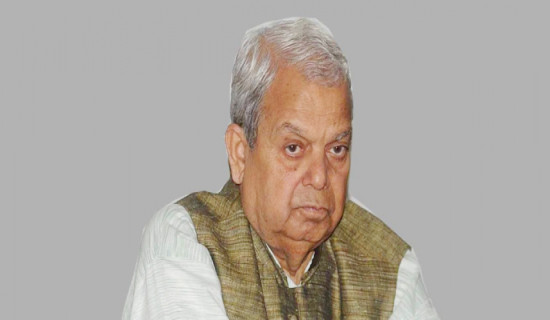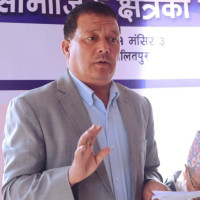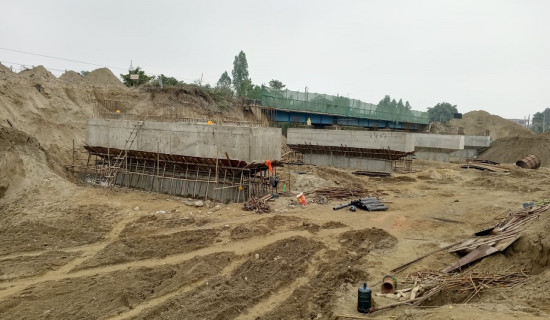- Wednesday, 7 January 2026
Bagmati: A Blend Of Culture And Nature
Bagmati Province is named after the Bagmati River Civilization. The civilization is perfectly mixed with nature and culture. Similarly, the perfect mix of nature and culture is tourism development. Religions, rituals, and festivals are related to the livelihood of the people. The culture related to agriculture is the livelihood dimension of people. Thus, economic growth through the development and promotion of art, culture, and nature is through tourism. The directive principle of the constitution states that the economic objective of the state is to achieve sustainable economic development with rapid financial growth using maximum mobilisation of available means and resources. The same clause says that the objective of the state is to develop a socially oriented, independent, self-reliant, and progressive national economy by abolishing economic inequality through an equitable distribution of achieved gains. Tourism is just one avenue towards the mobilisation of means and resources, as well as the integration of culture and nature. The constitution of Nepal on policies relating to Tourism says, “To develop eco-friendly tourism industries as an important base of the national economy by way of identification, protection, promotion, and publicity of the historical, cultural, religious, archaeological, and natural heritages of Nepal, to make environment and policy required for the development of tourism culture, and to accord priority to local people in the distribution of benefits of tourism industries." According to the constitution, governments must lead the economy by uplifting the tourism sector. Tourism must be the main backbone or guideline of the economy to achieve socialism.
Bagmati government
The government has published the Bagmati Province Tourism Act 2078. However, tourism industrialists were not pleased with the provisions of the Tourism Act. The act is in an amending process; however, the act has given direction to tourism development. The Bagmati government has allocated budgets for infrastructure development and the expansion of a tourism master plan. All the development activities must be guided by the tourism philosophy. The province has declared the current fiscal year as a year for travelling. The provincial government has also allocated a budget of Rs. 10 million for this purpose. Bagmati Province has announced 10 new tourist destinations. The province has allocated Rs 2 billion in the current fiscal year for the tourism sector.
Tourism development plans and programmes initiated by the government of Bagmati province include Bagmati tourism. Bagmati is the civilization, or the perfect blend of culture and nature, of Bhaktapur, Chitwan, Dhading, Dolakha, Kathmandu, Kavre, Lalitpur, Makwanpur, Nuwakot, Ramechhap, Rasuwa, Sindhuli, and Sindhupalchok districts of Nepal. It means that the government must be able to identify, preserve, and promote the culture and nature in the aggregation of the districts.
Bagmati civilization
The Bagmati civilization refers to the ancient civilization that thrived along the banks of the Bagmati River in what is now modern-day Nepal. The Bagmati River is significant in Nepal, flowing through the Kathmandu Valley and playing a crucial role in the region's history, culture, and development.
The Bagmati River does hold cultural and religious significance, particularly in Kathmandu, the capital city of the country. The ancient seal of Pashupatinath was excavated in Indus-Mohanjodaro, so the civilization is as old as the Indus civilization.
The Bagmati River itself is a tourist destination in the traditional sense, and the cultural and religious sites along its banks, particularly in Kathmandu, contribute to the tourism appeal of the region. Visitors to Nepal often include these sites as part of their cultural and spiritual exploration of the country. Demographics present the culture of the Newa, Tamang, and Khas people as a symbol of perfect cultural harmony.
Visit Bagmati - 2024
The Bagmati government has announced the visit year: 2024. The "Visit Bagmati, 2024" campaign is a national tourism promotion initiative in Nepal aimed at attracting national and international tourists and promoting the tourism industry. The campaign typically involves various programmes, events, and activities that should be organised by the government, tourism stakeholders, and private sector partners to showcase Nepal's cultural heritage, natural beauty, adventure tourism opportunities, and unique attractions. Thus, the government must initiate some significant programmes with a specific budget and timeline.
Central to the campaign is an extensive marketing and promotional effort targeting international markets through various channels, including digital media, print media, television, social media, and travel exhibitions. These initiatives aim to raise awareness about Nepal as a premier tourist destination and draw attention to its diverse offerings.
Moreover, organise special events, festivals, and cultural celebrations throughout the province to showcase Nepal's rich cultural heritage and traditions, including music and dance performances, art exhibitions, food festivals, and religious ceremonies.
Similarly, the promotion of adventure tourism activities such as trekking, mountaineering, paragliding, white-water rafting, bungee jumping, and jungle safaris will highlight Nepal's diverse landscape and outdoor adventure opportunities. Organising tourism promotion events and roadshows in key international markets and cities to engage with travel trade professionals, tour operators, travel agents, media representatives, and potential tourists to promote Nepal as a preferred travel destination.
Cultural and heritage tours should be offered to showcase Nepal's UNESCO World Heritage Sites, ancient monuments, religious shrines, and cultural landmarks. These tours provide immersive experiences for visitors keen on exploring Nepal's rich history and architectural marvels.
Lastly, community engagement should be emphasised, with a focus on involving local communities and stakeholders in tourism development initiatives.
This approach promotes community-based tourism while fostering sustainable practices that benefit local economies and preserve cultural and natural resources, ensuring a holistic and responsible approach to tourism development in Bagmati.
Kathmandu is home to several important cultural and religious sites along the banks of the Bagmati River, including the Pashupatinath Temple, a UNESCO World Heritage Site and one of the most sacred Hindu temples in Nepal. Pashupatinath Temple is dedicated to Lord Shiva and attracts pilgrims and tourists alike who come to observe its religious rituals and ceremonies. Thus, the Bagmati government must publish a brochure including all the natural and cultural attractions of Bagmati with a specified timeline, calendar, and budget to ensure the grand success of “Visit Bagmati, 2024.”
(The author is associated with tourism research and development.)

















